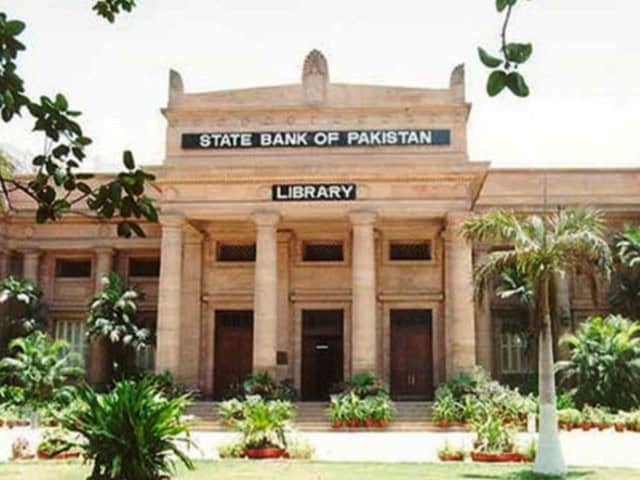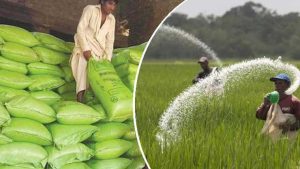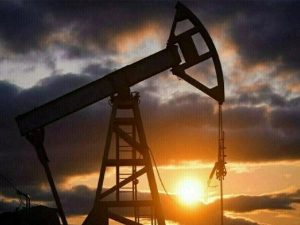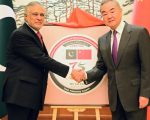KARACHI (APP) – The State Bank of Pakistan on Thursday stressed upon removing structural rigidities of various economic sectors, especially the export sector, in order to shift reliance from debt inflows for the financing of current account deficit and building up of foreign exchange reserves.
“The first and foremost, exports, the prime source of foreign exchange earnings for the country, have been stagnant in the recent past, and declined during July-March (period) of FY15,” the central bank said in its latest report covering economic performance during the third quarter (January-March 2015) of the last fiscal year that ended on June 30, 2015.
The report emphasized that as the non-debt inflows remained subdued, the country has to rely on debt inflows for the financing of current account deficit, and building up of liquid FX reserves.
Moreover, it said net foreign direct investment (FDI) inflows, though maintained the last year’s level, could not match the outflow under repatriation of profits/dividends while the modest growth in tax collections continued to be a challenge.
“Finally, inter-agency receivables remain a major constraint on the efficient functioning of the energy sector.”
Referring to the external sector, it said the sector improved considerably due to (a) the current account, benefiting from a robust growth in workers’ remittances, higher inflows under Coalition Support Fund, and a sharp reduction in oil prices, posted a notable surplus in Q3-FY15; and (b) the SBP’s liquid FX reserves more than doubled the level seen a year ago, enough to finance three months of the country’s import bill.
The resulting stability in the exchange rate, together with the government decision to pass-on the benefit of fall in international oil prices to domestic consumers and the prudent monetary management, not only pushed YoY CPI inflation down to a decade’s low, but also eased inflation expectations as shown by IBA-SBP’s Consumer Confidence Survey, it said.
“The reduction in inflation is broad-based: all measures of core inflation (non-food-non-energy, trimmed, and Relatively Stable Component of CPI) posted noticeable declines during the period of analysis.”
The report added that the budget deficit during Julu-March FY15 slightly narrowed to 3.8 percent of GDP, compared with 3.9 percent in the same period last year. FBR tax collections grew by 12.7 percent during Jul-Mar FY15, which were well below the 17.9 percent growth recorded in Jul-Mar FY14. Unlike the revenue side, the government efforts to control spending supported fiscal consolidation.
Overall expenditures grew by 8.3 percent during Jul-Mar FY15, against 8.7 percent in the same period FY14. It is also encouraging to note that lower growth in expenditures was not at the expense of development spending, which grew by over 20 percent YoY during the review period.
According to the report, the financing of budget deficit indicates that the government did not resort to inflationary borrowing from SBP; instead, it retired a huge sum of Rs 674.4 billion (on cash basis) during July-March FY15. As a result, the government was not only able to contain its borrowing from SBP within the IMF ceiling for end-March 2015, but also met the limit of zero quarterly borrowing prescribed in the SBP Act, 1956.
With these improvements, the policy focus is gradually moving from stabilization to economic growth. SBP has already initiated monetary easing to support economic activity by cutting its policy rate to a historic low.
“This policy reversal is likely to support credit to the private sector, which grew by only 5.5 percent during Jul-Mar FY15, compared with 10.0 percent during the same period last year,” it said, adding investment, which has been a key concern for economic growth in recent years, is likely to benefit from monetary easing and planned investment under the China-Pakistan Economic Corridor.
The report also noted that the real GDP grew by 4.24 percent in FY15. Though it was the highest since FY08, it fell short of 5.1 percent target for the year, as most of the challenges to economic activity continued to persist. Agriculture sector posted a slightly higher growth (2.9 percent) in FY15, compared with 2.7 percent in FY14. Large scale manufacturing (LSM) grew by 2.5 percent during Jul-Mar FY15, compared with the 4.6 percent growth during the same period last year. Despite relatively low growth in commodity producing sectors (agriculture and industry), services managed to grow by 5.0 percent in FY15, which was higher than 4.4 percent of last year.














